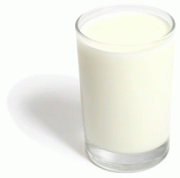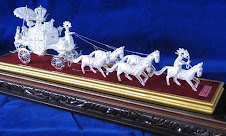 Nobody seems to be able to tell for sure where kefir originated and if both the water and milk kefir come from the same place, though the composition of both type of grains are similar.
Nobody seems to be able to tell for sure where kefir originated and if both the water and milk kefir come from the same place, though the composition of both type of grains are similar.Kefir is popularly believed to have originated centuries ago from the shepherds of the Caucasus mountain region. The people of this area, the Caucasians, were known to make kefir by adding kefir grains to goat or cow's milk and letting it ferment for days inside a goatskin leather bag.
In the last centruy, kefir has become increasingly popular in Russia and in the former Soviet states. Today, its popularity is still growing as countries like Czechoslovakia, Sweden, Norway, Switzerland and Denmark are manufacturing kefir on a commercial scale.
Unfortunately, the origin of kefir grains has long been surrounded by mystery. The most popular story on the origin of kefir grains is a legend of the Prophet Mohammed giving the Orthodox people of the Caucasian Mountain the very first kefir grains and teaching them how to make kefir or "the drink of the Prophet Mohammed" from it.
The kefir grains or "grains of the prophet" and the process of making kefir, were guarded very closely and were regarded as the family's or tribe's wealth. And since the kefir grains could be retrieved and reused indefinitely after each batch of culturing milk, these were passed on from generation to generation.
Another take on the origin of kefir grains is that it is actually manna on milk. The same manna, God miraculously supplied during the Israelites' 40 years of wandering in the wilderness as mentioned in the Jewish Torah and the Christian Bible.
In the end, we may never know whether the first kefir grains were a gift from the Prophet Mohammed or food supplied by God himself. For all we know, it could very well have been there all along.
But we are sure of one thing, that kefir grains and kefir will continue to puzzle the generations to come with its "miraculous" health benefits and healing qualities.









Tidak ada komentar:
Posting Komentar